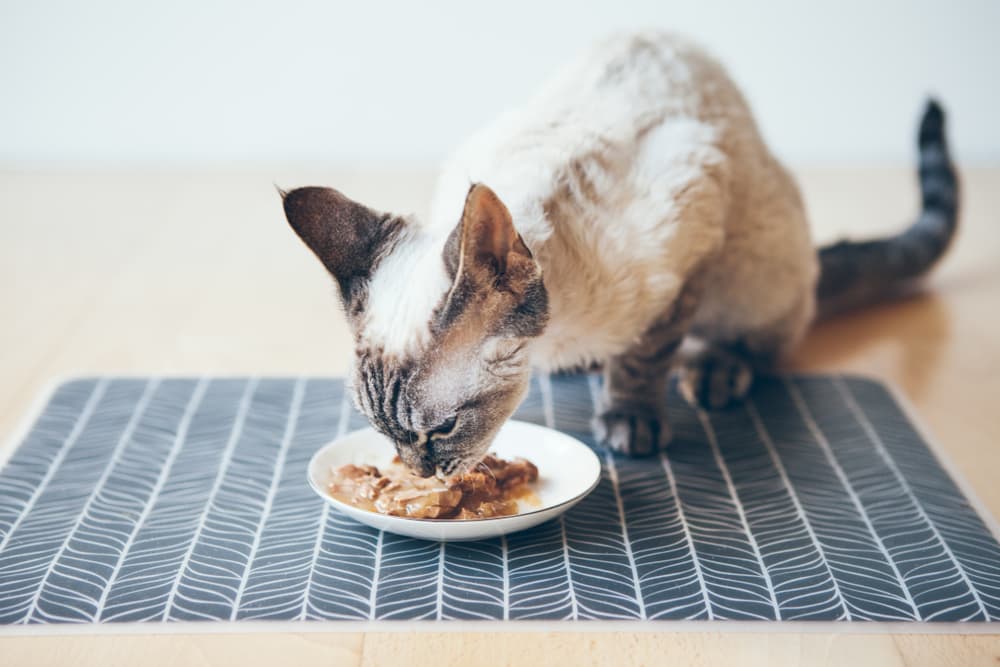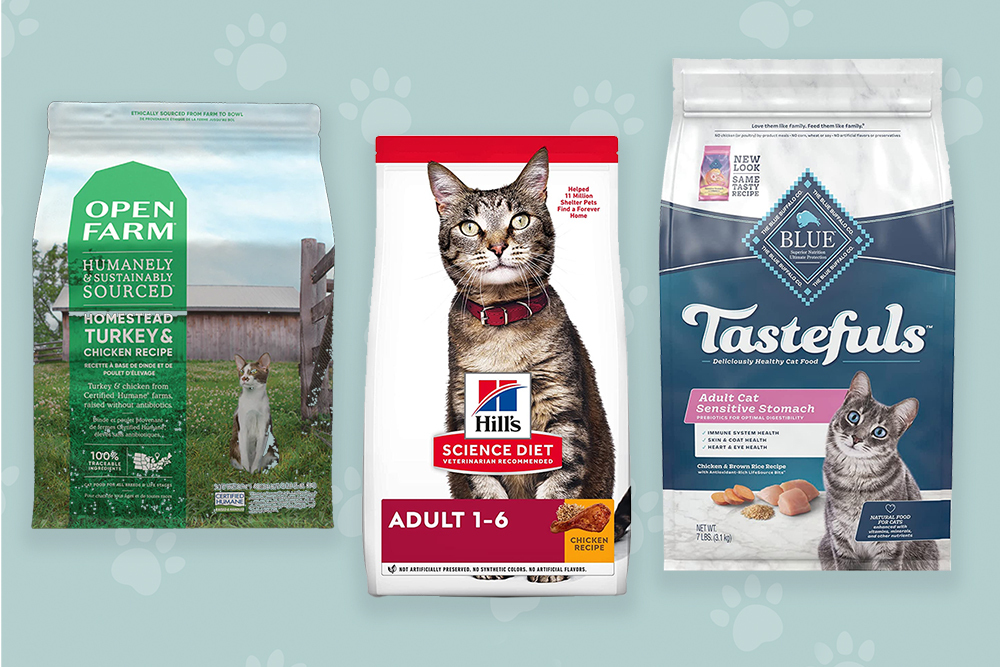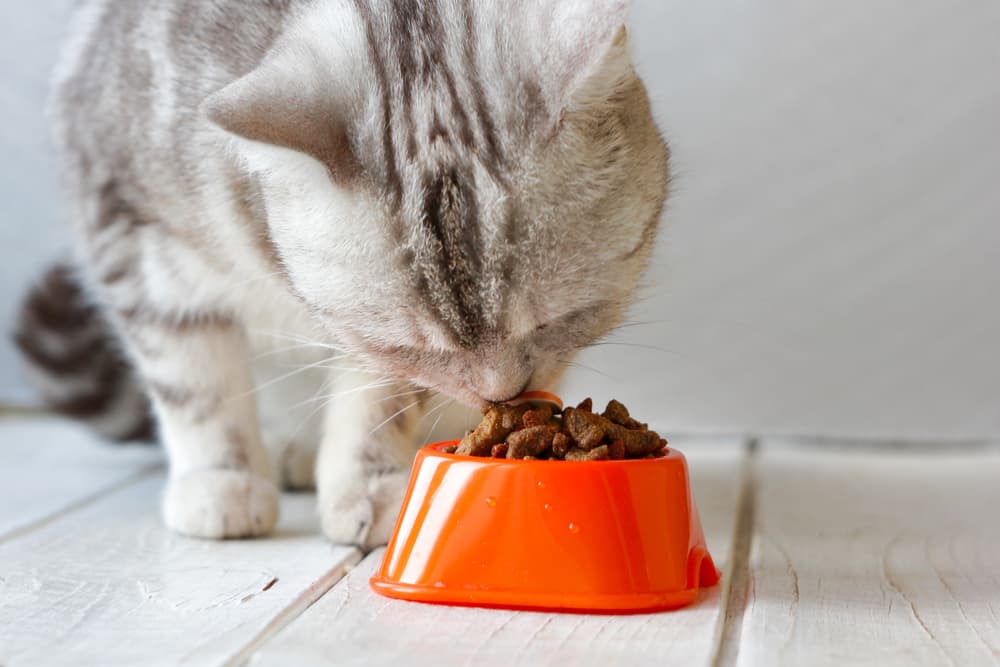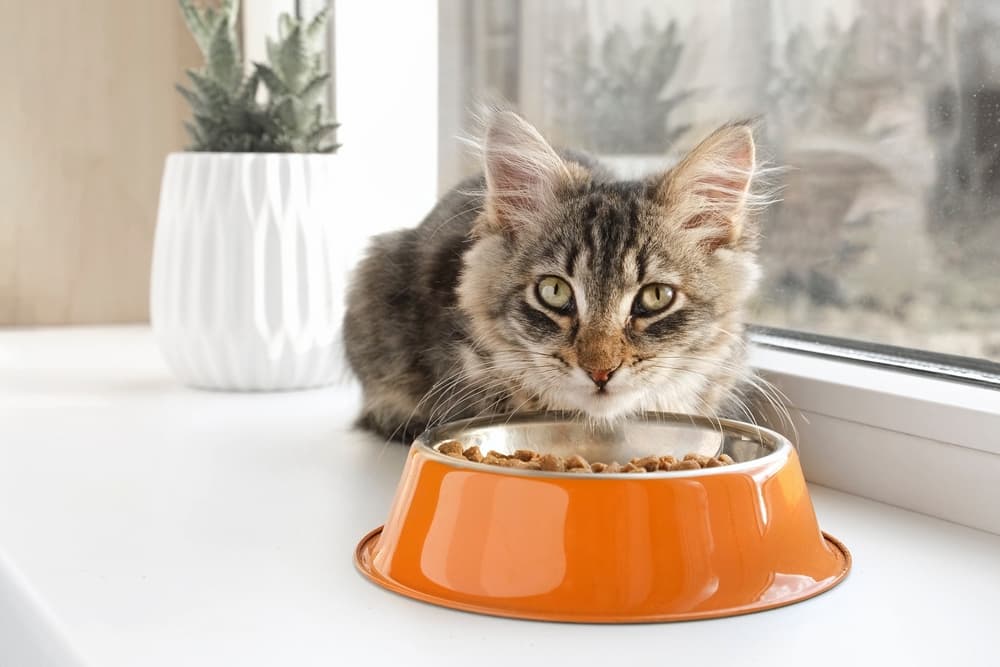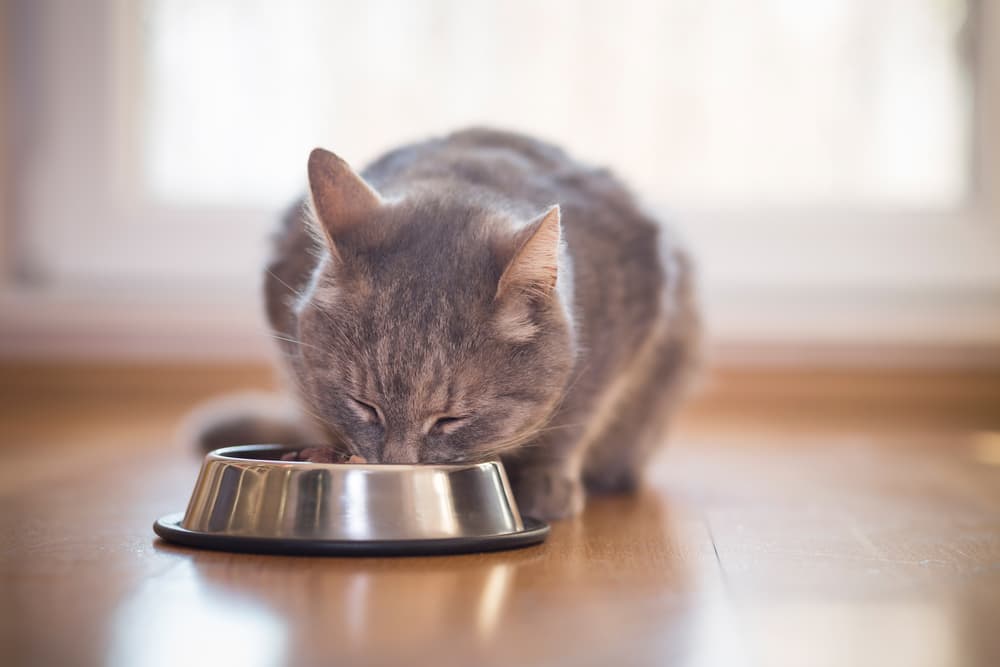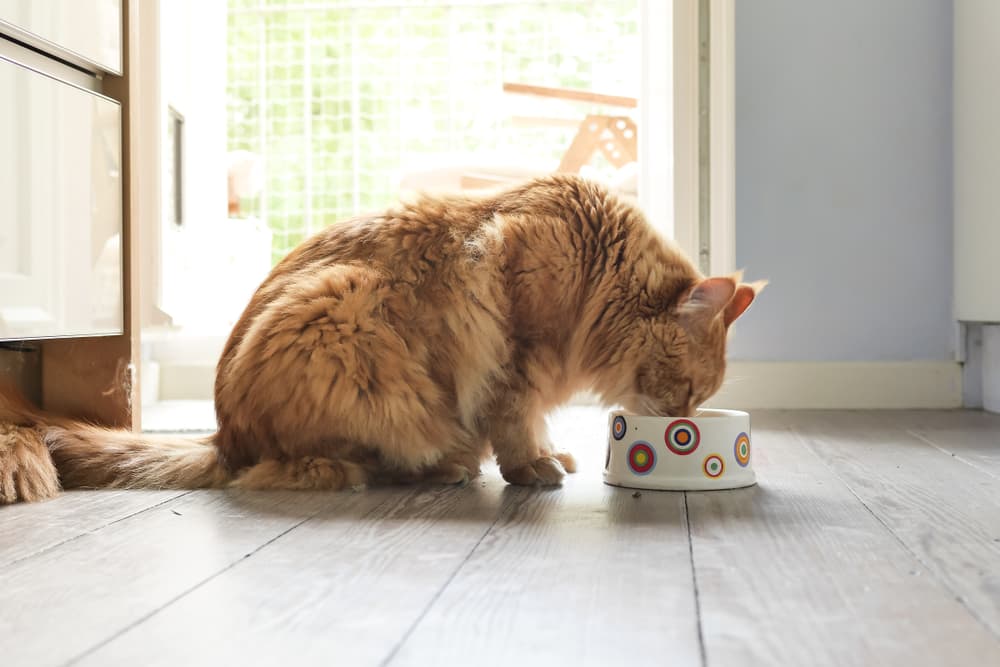Best Cat Food for Weight Gain: 8 Enticing Options
Reviewed by Sarah J. Wooten, DVM. Updated on July 04, 2024
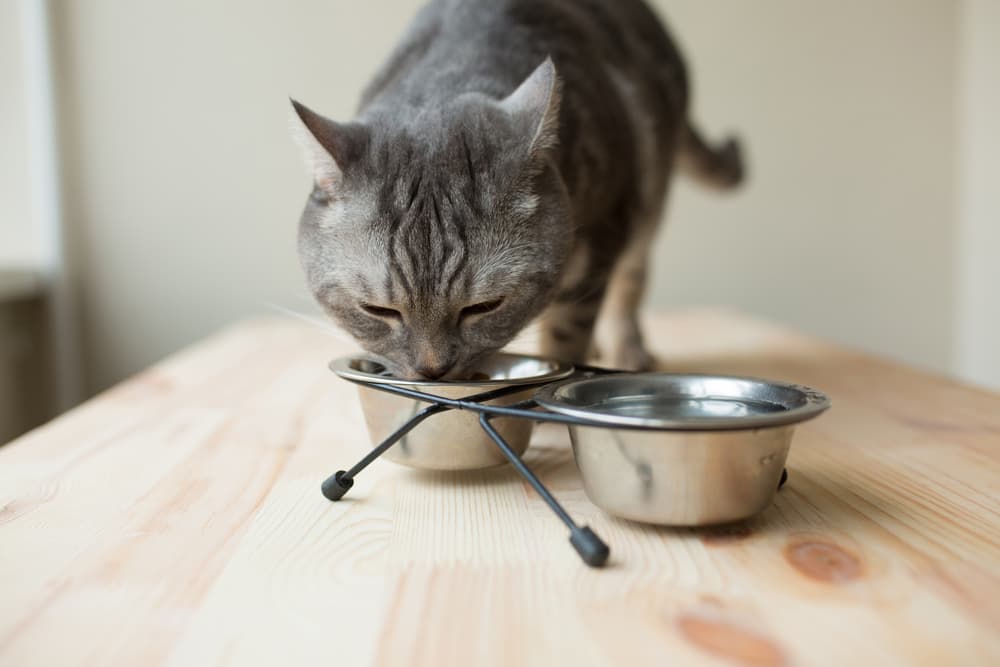
We’ve all seen the posters of the chubby kitty in the veterinarian’s office, and as pet parents, we know about dangers of feline obesity. According to a 2018 survey from the Association for Pet Obesity Prevention, about 60 percent of cats in the U.S. are overweight or obese (1). But having an underweight cat is just as problematic, and it isn’t always linked to a severe underlying condition like cancer or diabetes.
Just like humans, cats can lose interest in their food for a variety of reasons, including stress and anxiety, or simply old age.
Body condition score charts can help evaluate your cat’s ideal shape. If you can easily see and feel your cat’s ribs and he has an obvious waist, these are good indicators that he might be malnourished or below a healthy weight. Changes to your cat’s skin and coat quality can also be indicators of poor nutrition.
A cat’s diet is important to her overall health and wellbeing. An average healthy adult cat weighing 11 pounds should consume around 250 to 290 calories per day (2). If your cat’s body condition is less than ideal (too thin), he will have higher requirements.
Finding a cat food for underweight cats to help him safely gain weight is vital to avoid further health issues. That’s why we’ve rounded up the best cat foods for weight gain and everything you need to know to make the right choice for your pet. Always consult your veterinarian before starting your cat on any new diet.
Our Picks:
All featured products are chosen at the discretion of the Vetstreet editorial team and do not reflect a direct endorsement by the author. However, Vetstreet may make a small affiliate commission if you click through and make a purchase.
When it comes to cat food to fatten cats, here are our favorite selections. Remember, food to help cats gain weight should be fed under the direction of your veterinarian.
- Best Overall Winner: Smalls Human-Grade Cat Food
- Best High Protein Wet Cat Food for Weight Gain: Instinct Original Grain-Free Pate
- Best Dry Cat Food for Weight Gain: Blue Buffalo Wilderness High Protein Dry Cat Food
- Best Prescription Cat Food for Weight Gain: Royal Canin Recovery
- Best Kitten Food for Weight Gain: Wellness Core Natural Grain-Free Kitten Food
- Best Senior Cat Food for Weight Gain: Hills Prescription Diet a/d Urgent Care
- Best Value Cat Food for Weight Gain: Purina One True Instinct High Protein Dry Cat Food
- Best Food Topper for Underweight Cats: Under the Weather High Calorie Topper for Cats
Best Cat Food for Weight Gain: 8 Enticing Options
Best Wet Cat Food for Weight Gain
Our pick: Smalls Human-Grade Cat Food
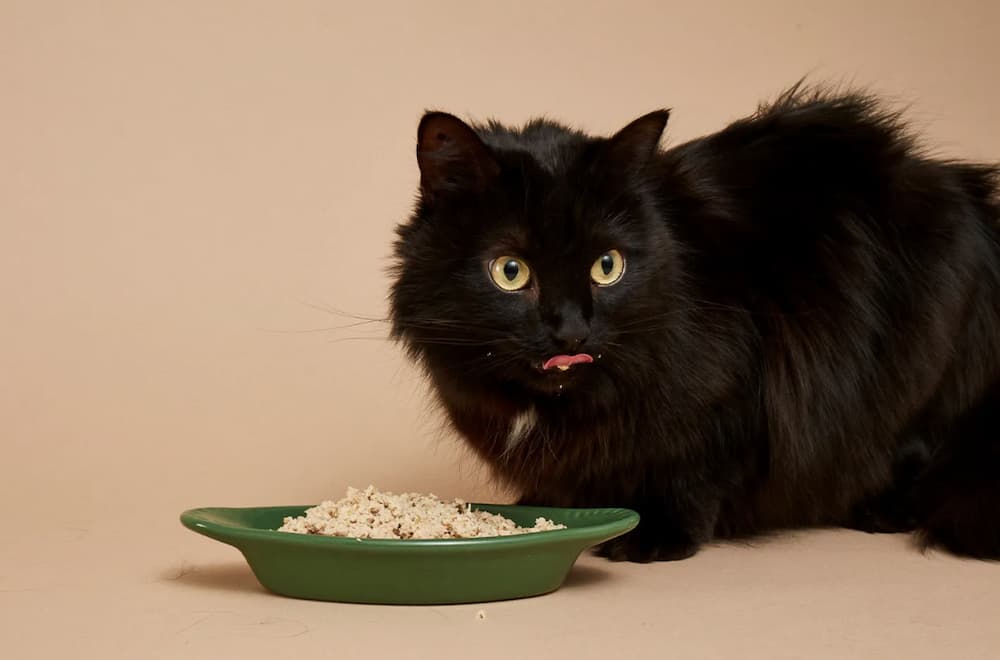
32% off + free treats for life with code VETSTREET5
Smalls specializes in fresh, human-grade (aka high-quality) cat food, like 90 percent lean ground beef with 10 percent heart and liver in their cow recipe. Using all-natural proteins to feed your “obligate carnivores,” Smalls delivers grain-free, meat-packed nutrition in tempting flavors and textures that will entice picky eaters. While it’s not technically “high-calorie,” this high-protein wet cat food is calorically dense because it doesn’t contain fillers.
Highlights
- Three flavors (chicken, turkey, and beef) and two textures (ground and smooth) are sure to result in a combination that will please your pet
- Ingredients are USDA certified, humanely harvested, and sustainably sourced
- No preservatives, artificial flavors, colors, or other additives
Things to Consider
- After a trial box (11.5 ounces of five varieties), Smalls is subscription-based plan that ships every 4 weeks
Best High Protein Wet Cat Food for Weight Gain
Our pick: Instinct Original Grain-Free Pate
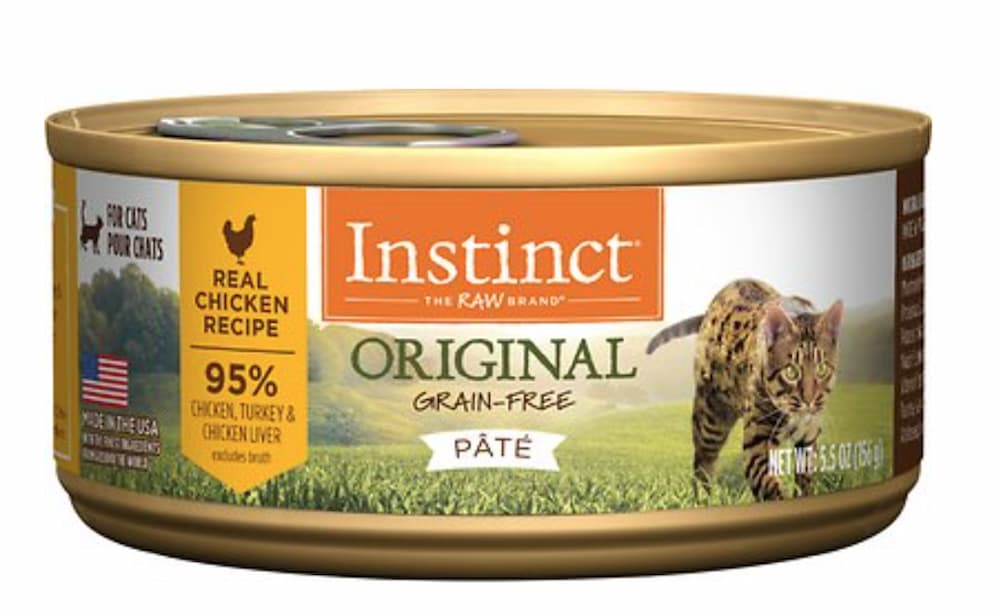
Instinct’s cage-free chicken pate is another great wet food pick. Packed with 95 percent animal protein (excluding the broth), this recipe is also grain-free and rounded out with wholesome fruits and veggies. This high calorie cat food contains 112 kcal/3 oz can.
Highlights
- Also available in rabbit, duck and salmon flavors, for cats who are not crazed about chicken
- Made without grain, corn, wheat, soy, potato, gums, artificial colors, flavors, or preservatives
- Contains omega-fatty acids from flaxseed and fish oil for skin and coat health
Things to Consider
- Two 3-ounce cans or one 5.5-ounce can is recommended per day, per 6 to 8 lbs. of body weight (possibly more for added weight gain)
- Some reviewers (and their cats) were turned off by the soupy texture of this weight gaining cat food
Best Dry Cat Food for Weight Gain
Our pick: Blue Buffalo Wilderness High Protein Dry Cat Food
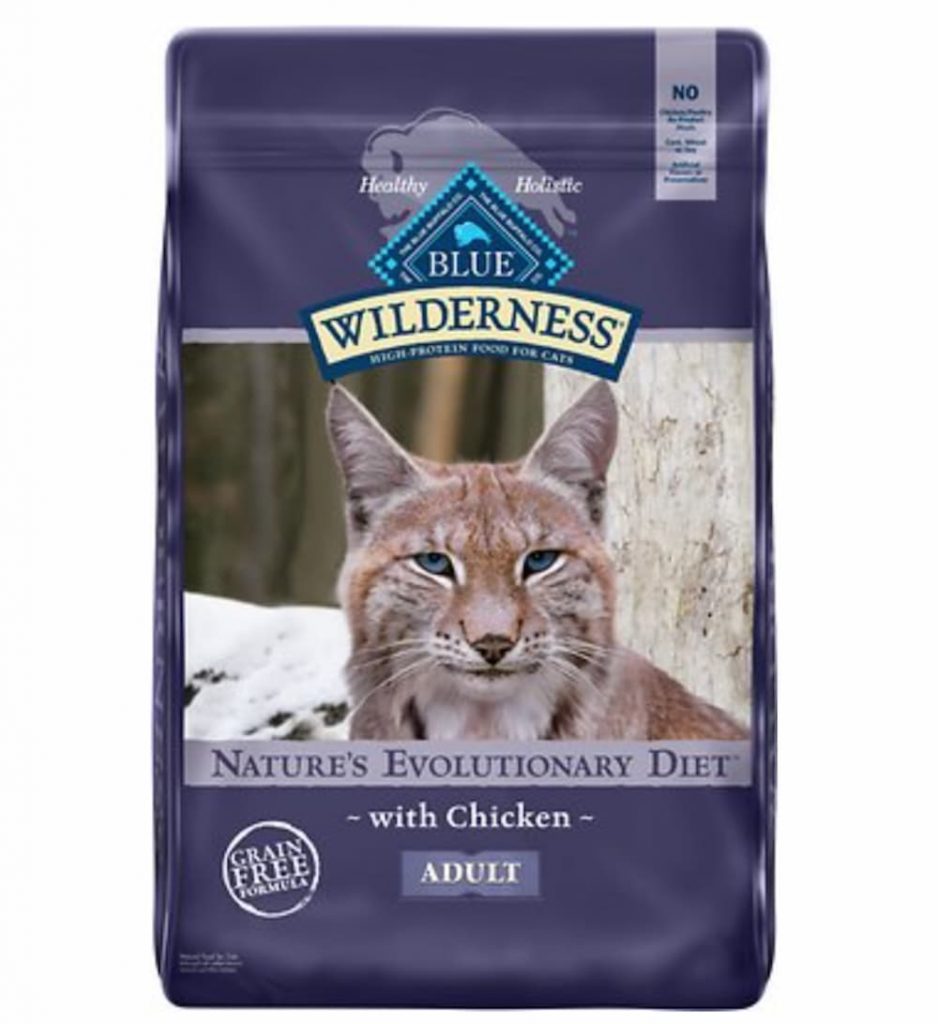
Protein-rich flavors like chicken, duck, and salmon help develop lean muscle mass, while omega-3 and omega-6 fatty acids protect a cat’s skin and coat. We love Blue Buffalo’s dry formula weight gain cat food, which contains healthy carbohydrates like sweet potatoes. These carbohydrates help sustain kitty’s energy levels and are a great substitute for grains or fillers, which are not used in Blue Buffalo’s recipes.
Highlights
- The weight gain food for cats contains 40 percent protein from real chicken, with 443 calories per cup
- The brand’s exclusive “LifeSource Bits” are a combination of antioxidants, vitamins, and minerals, developed by animal nutritionists and holistic veterinarians, including blueberries and cranberries
Things to Consider
- Available in a variety of sizes, including 2.5-, 6- and 12-lb. bags
- Some reviewers noted that the kibble size has increased
- This food has mostly rave reviews, but some pet parents claim their cat developed urinary or kidney issues after eating it
Best Prescription Cat Food for Weight Gain
Our pick: Royal Canin Recovery
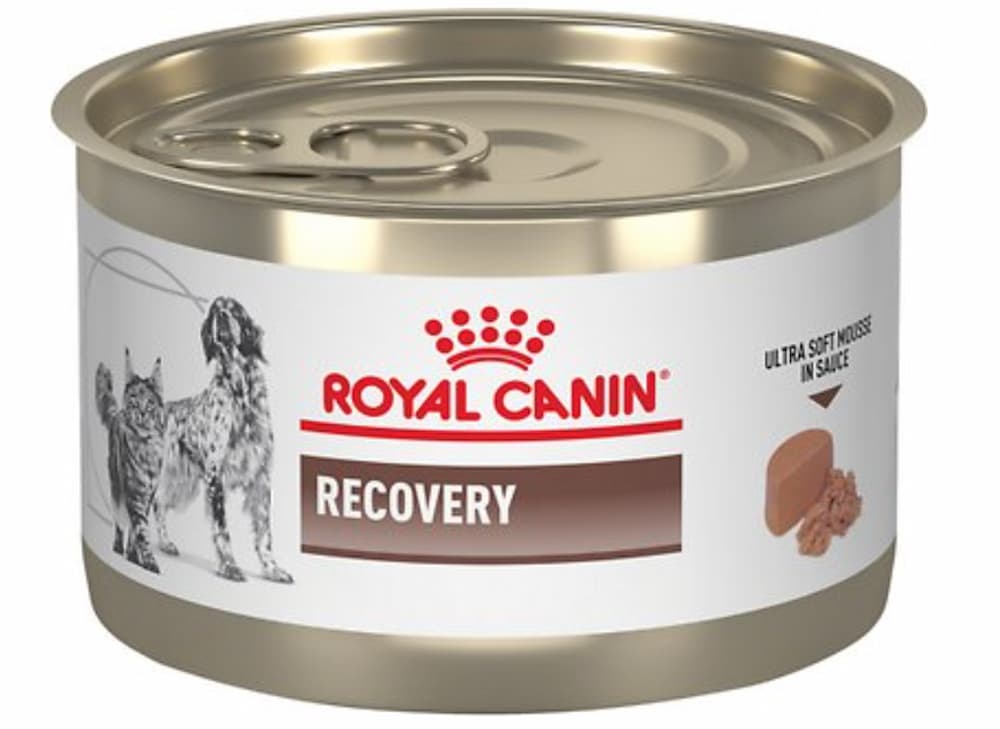
Will wet food help my cat gain weight? It can. Formulated by veterinary specialists, this high-protein blend works to pack on the pounds. It’s suitable for hospitalized pets, those recovering from an injury or illness, and picky eaters who have lost interest in food. Made with chicken and chicken liver, this pet food gains high marks because of its calorically dense recipe and its mousse-like texture, which is easy to chew and swallow.
Highlights
- High-fat formula ensures a little food goes a long way for pets without an appetite
- Suitable for both cats and dogs
Things to Consider
- This is a prescription food that requires a script from your vet
- This critical-care recipe isn’t cheap, costing about $2.50 per 5.1-ounce can
- Some reviewers noted that the can size is slightly smaller but costs the same
Best Kitten Food for Weight Gain
Our pick: Wellness Core Natural Grain-Free Kitten Food
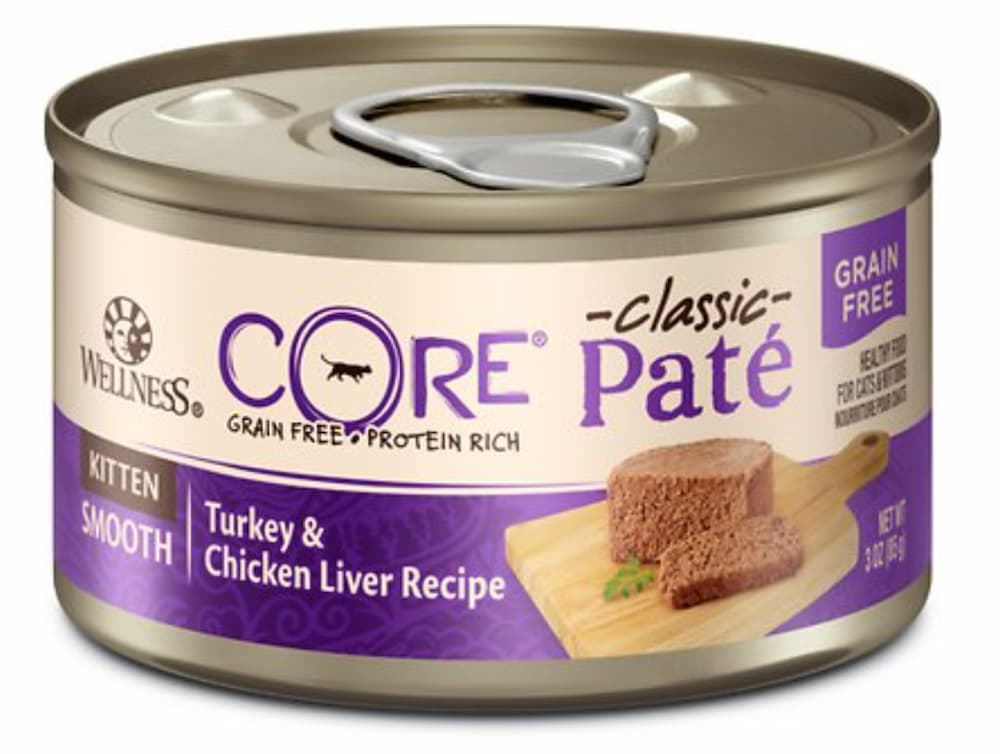
This protein-dense kitten food will help your cat gain weight, no matter the age. Available in multiple flavors, such as turkey and chicken liver or whitefish, salmon and herring, these cans serve up nutrients as well as variety in a highly digestible and moisture-rich formula.
Highlights
- Soft texture makes it easy on senior cats and those with dental problems
- This weight gain cat food has a substantial 12 percent crude protein and 38 percent of overall calories from protein
- No artificial flavors, colors, preservatives or carrageenan
Things to Consider
- Its price point is on the higher side, at nearly $3 per 5.5-ounce can
- While many reviewers say their kitties go crazy for this formula, some customers noted that their picky cats wouldn’t eat the food
Best Senior Cat Food for Weight Gain
Our pick: Hills Prescription Diet a/d Urgent Care
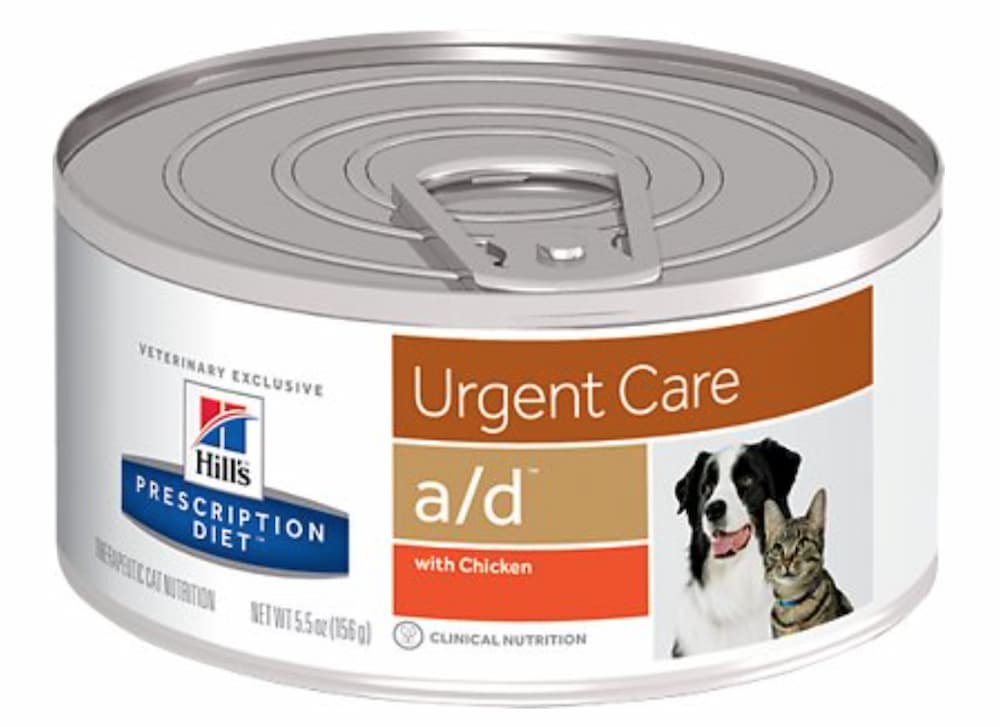
Extra energy and nutrients come in a silky cat food that’s highly digestible for senior kitties who need to preserve muscle mass and support their immune system. In addition to senior cats who need enticement to eat, this food is especially ideal for cats recovering from surgery, illness or injury.
Highlights
- Formulated by veterinarians, with taste and palatability in mind
- Its soft texture makes it adaptable to bowls, spoons, or syringes, depending on feeding method needed
- Highly digestible as a weight gaining food for cats
- Suitable for both cats and dogs
Things to Consider
- This is a relatively pricey, prescription-only, cat food to fatten cats
Best Value Cat Food for Weight Gain
Our pick: Purina One True Instinct High Protein Dry Cat Food
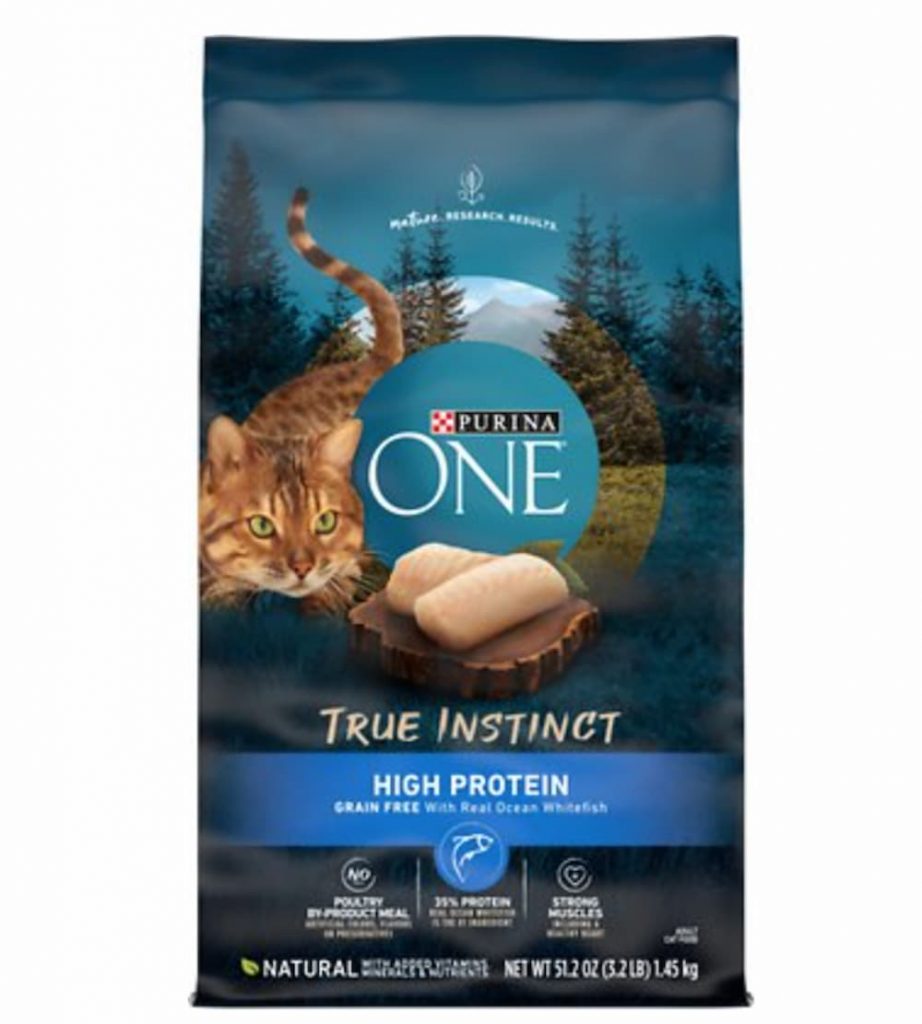
Not every protein-rich diet needs to be from an expensive prescription cat food. For pet parents on a budget who want to give their fur babies a weight boost, Purina offers a high-protein dry food, available in ocean whitefish or chicken recipes. Offering 356 calories per cup (for whitefish recipe), many cats will enjoy this textural combo of crunchy bites and tender, meaty morsels. For a high calories cat food, Purina One True Instinct High Protein Dry Cat Food checks all the boxes.
Highlights
- Contains 35 percent protein to promote muscle mass with no poultry byproduct meal, artificial colors, flavors, or preservatives
- Omega-6 fatty acids to support skin and coat
- A 3.2-lb. bag is less than $8; also available in 6.3- and 14.4-lb. bags
Things to Consider
- Some customers noted their cats weren’t a fan of both textures
Best Food Topper for Underweight Cats
Our pick: Under the Weather High Calorie Topper for Cats

Weight gaining food for cats is one option and so is a food topper for underweight cats. At 20 calories per scoop, pet parents can sprinkle Under the Weather’s high-calorie food topper on food. This tasty chicken powder is designed to stimulate appetite, promote weight gain, and boost energy. Each container is veterinarian-formulated and made in the United States. Provide one to two scoops needed, and the scoop is provided.
Highlights
- Can be mixed with warm water to create a gravy consistency
- Contains nine vitamins and six minerals to help overall health
- Each purchase benefits shelter pets
- Each scoop is 20 calories
Things to Consider
- Finicky cats may not be fond of the consistency or flavor
- 20 servings per container
- One flavor
Cat Food for Weight Gain: Key Benefits
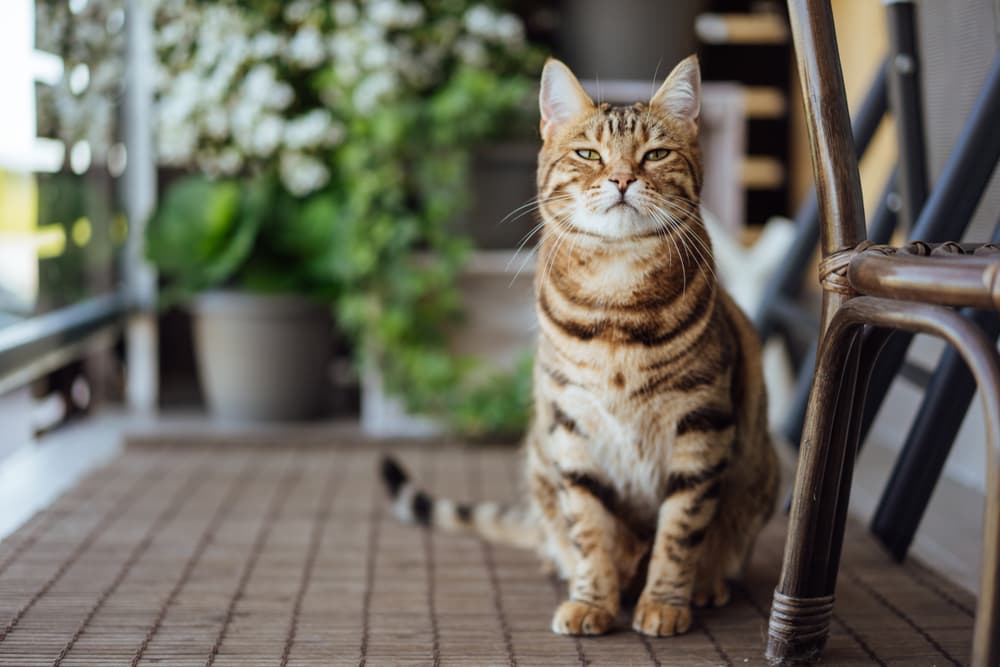
Cat food for underweight cats comes in various formulas and textures. Be sure to differentiate high-protein or high-calorie foods meant for daily consumption from supplements, like calorie-rich nutritional gels, intended for intermittent feeding.
Dr. Sarah Wooten, a small animal veterinarian based in Colorado, says that some cats might need a higher calorie diet and therefore could benefit from a high-calorie canned therapeutic food. Older cats, specifically, could take advantage of a highly digestible food rich in antioxidants, omega-3 and -6 fatty acids, guaranteed probiotics, and prebiotics.
What about cat food to put on weight? A safe and effective way to infuse more calories into your adult cat’s diet is to feed a high-quality kitten food, which tends to be higher in calories. Cats diagnosed with specific health concerns, like early onset kidney disease, might need a prescription therapeutic food directly targeting these conditions. While more protein is generally great for pets to gain weight, a low-protein diet is recommended for cats with advanced kidney disease.
A fattening cat food should be palatable so cats enjoy it, but also highly digestible with balanced nutrition and a higher caloric content with increased fat and protein. We do not recommend homemade cat food to gain weight unless under the guidance of your veterinarian or veterinary nutritionist. Cat food for gaining weight should always be under the directive of professionals.
How to Fatten Up a Cat: Tips and Advice
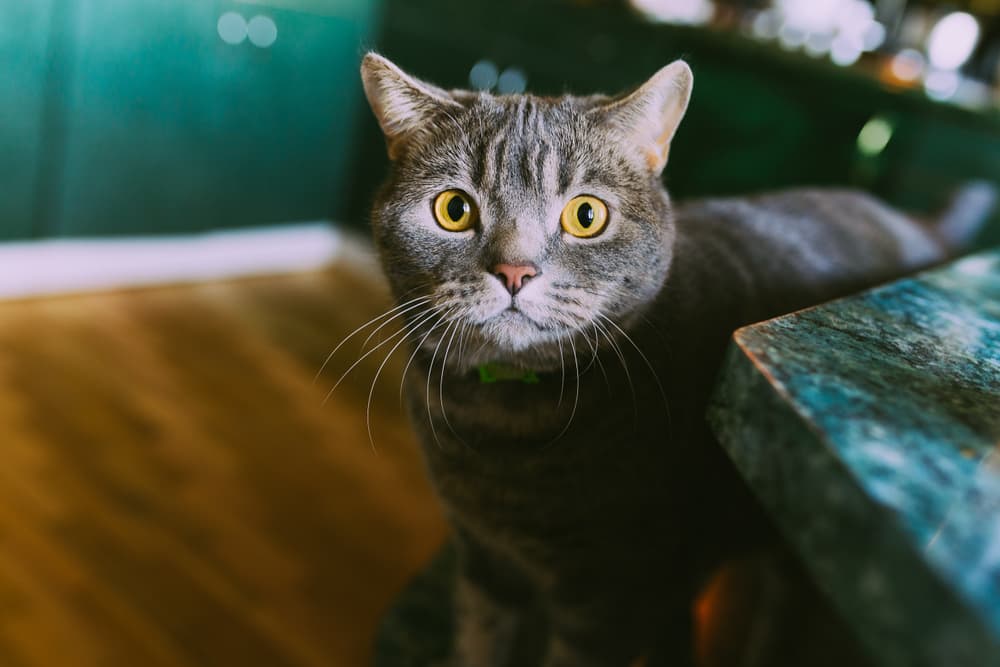
Rule Out Medical Concerns
Regardless of your choice of cat food, you and your veterinarian will need to determine the underlying causes of your cat’s weight loss prior to adjusting her diet. Common and more serious causes of weight loss in cats can be overactive thyroid disorder, feline diabetes, intestinal parasites, dental problems, or FIV, which all require medication.
A weight gain cat food isn’t just calorie-dense; it has specific, concentrated ingredients to help your feline maintain a healthy weight. Your veterinarian can rule out any underlying causes of weight loss and help you formulate a plan to get your cat at her ideal weight. If your cat has dental issues, she may have pain when trying to eat. Like all pets, cats need dental care.
However, other common causes of weight loss in cats can be changes to their digestive system caused by age, the stress of a move, anxiety about feeding habits like bowl placement or crowding—even insufficient food due to another pet who might be stealing from their bowl. These causes for malnutrition can also be challenging but are resolvable once you identify the trigger. Consider creating a calmer environment for your cat to eat in, serving smaller meals throughout the day, or luring him by adding rotisserie chicken or canned tuna to her food.
Free Feeding For Weight Gain
Consider leaving a cat fattening food out for your cat, otherwise known as free feeding. Many cats find free feeding less stressful than being on a specific meal schedule. Food that is left out for extended periods of time can lose its freshness, so pay attention to how much food your cat eats.
Regularly monitor your cat’s weight if you opt for free feeding to see if it is making a difference. If you free feed wet food, it can go bad if left out for too long.
High Calorie Cat Foods and Toppers
High calorie cat food for weight gain coupled with a topper works for many situations. You may want to try mixing dry and wet food, microwaving sometimes, or topping with a product like Under the Weather, a high-calorie topper for cats. This veterinarian-formulated powder contains 20 calories per scoop. It helps promote weight gain and stimulates a cat’s appetite in a tasty chicken flavor.
Make the Cat Food More Appealing
If you cat isn’t fond of the food you are serving, it may be time to switch things up. Adding a little water can make dry food more palatable. Some veterinarians recommend adding tuna juice, low-sodium chicken brother, or bone broth to cat food to enhance its aroma.
Reduce Anxiety When Feeding
Although some cats are laid back and tend to just go with the flow, other cats get easily upset or stressed in various situations. There are a variety of calming products to help reduce feline fear and anxiety you can discuss with your veterinarian.
Pay attention to where your cat’s feeding station or bowls are located. If they are in high traffic or busy areas of the house, consider moving bowls to a more calming location.
Food to Help a Cat Gain Weight: What to Look For
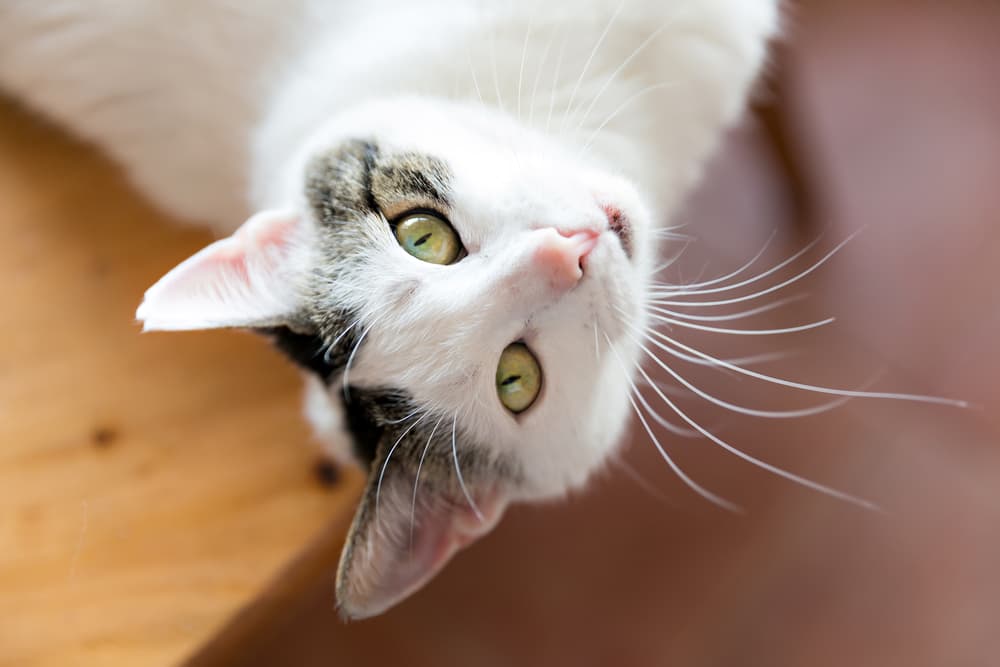
Dry kibble for an underweight pet should contain about 30 percent protein and 20 percent fat, while wet food should contain 7 percent protein and 5 percent fat or higher, according to PetCareRx. While both can effectively provide your pet with increased calorie intake, wet food is usually easier to digest, especially for senior cats or kitties with dental diseases. Plus, pet parents can microwave moist cat food to increase its aroma and lure hesitant eaters with smell.
When evaluating cat food to help gain weight, be on the lookout for natural ingredients that emphasize protein and high-quality fats over grains and fillers. While some formulas are developed by veterinarians for optimal weight gain, you need to make sure the food you purchase mentions a high-calorie or calorically dense diet, has plenty of protein, and perhaps above all, is a flavor and texture your cat will actually eat and enjoy.
FAQs
Packing on calories on your cat should only be done under the supervision of your veterinarian. As discussed, there may be any number of underlying health issues contributing to your cat’s weight loss. Follow our tips above plus consider frequent, smaller meals fed several times throughout the day. This may help increase their calorie intake.
No, all weight gain cat food is not the same. As indicated by our top selections above, some weight gain food has more calories per serving than others. Some formulas are made without corn or wheat fillers while others provide additional vitamins and minerals to support overall health.
In general, cat foods that can more fat and protein tend to be more effective to help gain weight. Because cats can be picky eaters, you may need to experiment with tastes and textures such as dry food or wet food. In general, a high-quality, high protein cat food for weight gain should help whether kibble or wet.
After ruling out medical conditions, consider one of the senior weight gain foods for cats on our list. Many older cats prefer wet food, especially if they have any dental issues. Slightly warming the food before serving may make it more appetizing, too. Many cat parents find success by feeding their senior cat in a quiet, stress-free area.
As discussed, dry food for an underweight pet should contain about 30 percent protein and 20 percent fat. Because kibble is often dense in calories, it may contribute to weight gain unless portion size is controlled. If your intent is to help your cat gain weight, the right kibble served in ideal portion can help.
On the flip side, some pet parents ask us about cats who need to lose weight. Fortunately, for cats who need to lose weight, we compiled a list of our favorite selections of the best cat food for weight loss.


